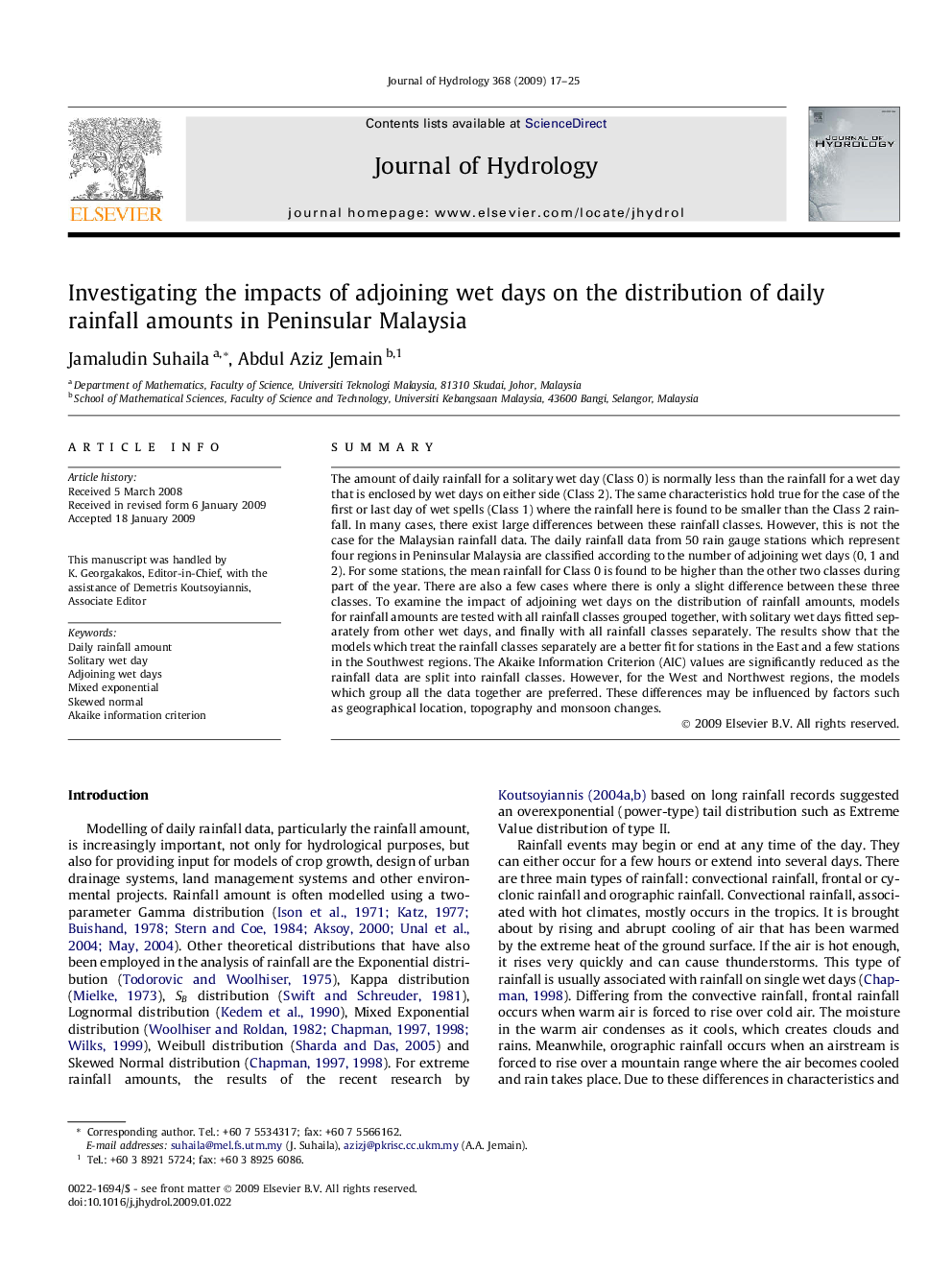| کد مقاله | کد نشریه | سال انتشار | مقاله انگلیسی | نسخه تمام متن |
|---|---|---|---|---|
| 4579022 | 1630085 | 2009 | 9 صفحه PDF | دانلود رایگان |

SummaryThe amount of daily rainfall for a solitary wet day (Class 0) is normally less than the rainfall for a wet day that is enclosed by wet days on either side (Class 2). The same characteristics hold true for the case of the first or last day of wet spells (Class 1) where the rainfall here is found to be smaller than the Class 2 rainfall. In many cases, there exist large differences between these rainfall classes. However, this is not the case for the Malaysian rainfall data. The daily rainfall data from 50 rain gauge stations which represent four regions in Peninsular Malaysia are classified according to the number of adjoining wet days (0, 1 and 2). For some stations, the mean rainfall for Class 0 is found to be higher than the other two classes during part of the year. There are also a few cases where there is only a slight difference between these three classes. To examine the impact of adjoining wet days on the distribution of rainfall amounts, models for rainfall amounts are tested with all rainfall classes grouped together, with solitary wet days fitted separately from other wet days, and finally with all rainfall classes separately. The results show that the models which treat the rainfall classes separately are a better fit for stations in the East and a few stations in the Southwest regions. The Akaike Information Criterion (AIC) values are significantly reduced as the rainfall data are split into rainfall classes. However, for the West and Northwest regions, the models which group all the data together are preferred. These differences may be influenced by factors such as geographical location, topography and monsoon changes.
Journal: Journal of Hydrology - Volume 368, Issues 1–4, 30 April 2009, Pages 17–25